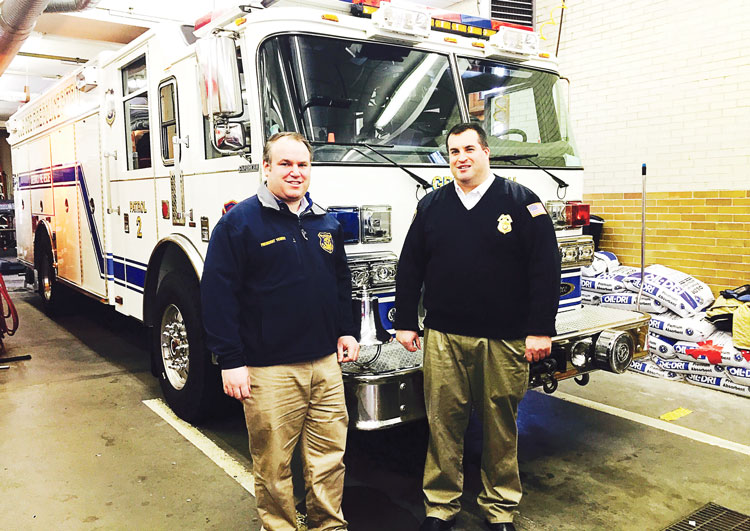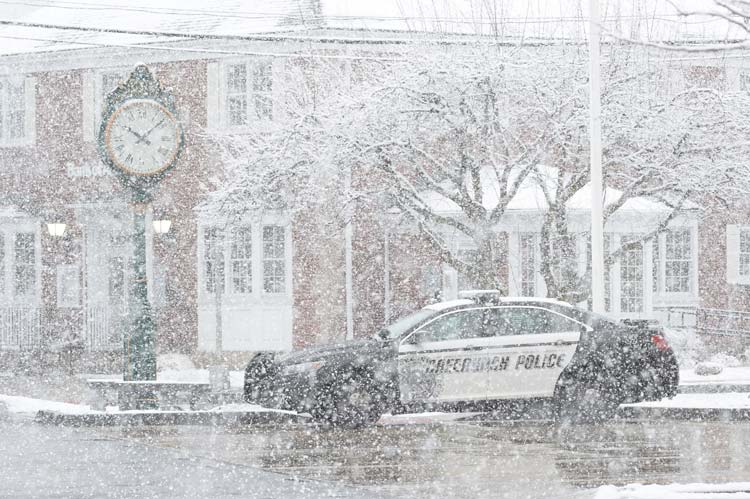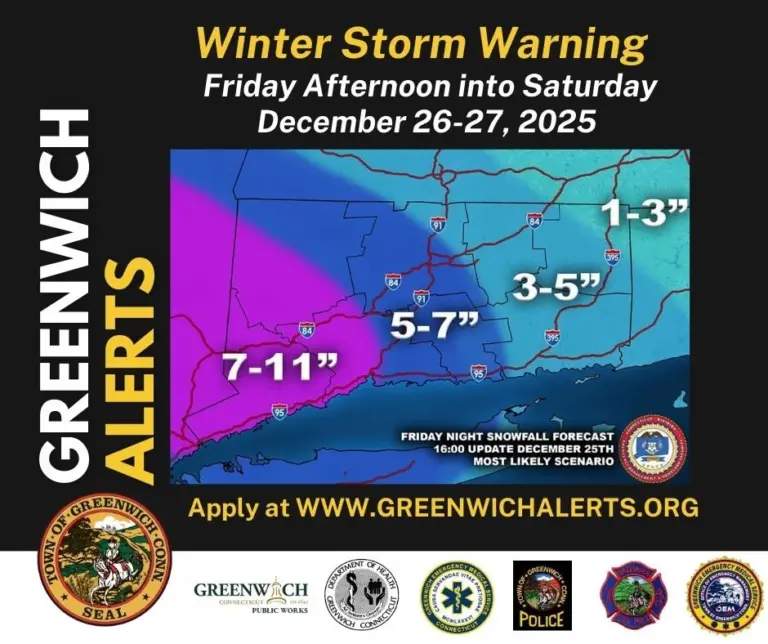
By Chéye Roberson
Sentinel Correspondent

The Cos Cob Fire Police Patrol, Inc., is an all-volunteer patrol places special importance on saving valuables inside a building from fire and water damage.
CCFPP, which typically responds to over 1,000 calls a year, has draining tools to decrease flood damage and other threats to the structure of the home or shop that decrease the price for insurance pay outs.
“We will go in and cover furniture, files, family heirlooms – many residents are thankful for that,” said Peter Yeskey, the president of the Cos Cob Police Patrol. But fire police are not nearly as common as they once were. “There are only 10 of us left in the country. The nearest Is Rochester, New York.”
“It’s a dying art,” added Cos Cob Fire Police Patrol Chief Brian Kelly.
When CCFPP arrives at a scene of blaze, its “first priority is to make sure everyone is out of the structure”, said Yeskey. Then the patrol will secure the valuables inside and use a water pump to remove excessive fluids if necessary.
One tool the patrol relies on heavily is the water shoot, the design of which has been used for decades to catch water and redirect it away from carpeting, furniture, and other water-threatened materials.
“The water shoot diverts the water out of a window saving the carpet,” said Yeskey. Yeskey was elected President of the patrol in 2011.
The fire police concept came from the New York Board of Fire Underwriters in the 1800’s; the name came from the fire police patrolling the streets of New York City in those days. These fire police would walk a beat and look for fire. They carried an instrument which made an instantly recognizable screeching noise to alert people in case they found one. They would then go into the home to save the people and the valuables of the house. It’s called salvage work. These fire police wore red helmets to differentiate from the regular police.
The CCFPP operates within the structure of the Greenwich Fire Department; it conducts traffic operations, scene control and lighting, salvage work, and other support functions for the fire department.
The patrol was founded in 1927 and formerly had powers of arrest in Greenwich. The fire police patrol was used as an arm of the police that focused on emergency and disasters while other police focused on crime. Today the fire police patrol keeps up the tradition of wearing badges.
Fifty percent of the volunteers have some EMS training, and a large number of EMTs volunteer for the station. If the police are shorthanded they will call the fire police patrol. It can be a situation where the police need lighting for a scene investigation or an emergency like Hurricane Sandy in 2012 where the police needed help making sure that, for safety reasons, only residents were allowed in and out of Old Greenwich after the storm hit. The Cos Cob Fire Police Patrol was out there for nine hours.
The patrol also lent its help to Greenwich residents during Hurricane Ernesto in 2006.
During the town elections last fall at Greenwich High, there was some concern about the lighting in front of the school since, construction was in progress. The fire police patrol set up auxiliary lights and made the area safe for the voters.
There have been occasions where a powerline was on fire in the middle of a residential street and the fire police patrol would come to block the road.
The CCFPP also “protects the protectors” when they are called to the highway to guard the perimeter around an accident. All volunteers take the TIMS course, which stands for traffic incident management system.
“We’ll pull up and position the truck on an angle as a blocker so the traffic doesn’t drive into the scene,” said Kelly. Kelly is a third generation volunteer. His grandfather was captain/chief officer in 1958 and his uncle was president of the patrol on 1990. His grandfather was an active member until he was in his 70’s.
The trucks carry portable traffic signs, such as “lane closed” signs, and cones to aid in diverting traffic.
“The whole idea is to get the traffic organized like marching ants passing our scene,” Kelly. “We’ve shut down I-95 when the accident warranted.”
In 2013, State Rep. Fred Camillo helped pass the Fire Police Bill after a volunteer of the CCFPP was struck by a man in a car who disregarded his orders and attempted to drive through an area with fallen trees and power lines. The bill makes it a traffic infraction to ignore the directions of a member of the fire police when they are protecting traffic from a hazardous area.
“We went to Hartford to change the law to make fire police patrol members as protected as paid fire fighters,” said Kelly. “We were personally involved and that affects all of Connecticut.”
Yeskey added, “We learn as we go along from these unfortunate situations. That’s how laws are typically made.”
Incidents go through the dispatch center and the police patrol has a text messaging system and pager devices to receive the calls.
“We respond to 80 – 180 calls a month,” said Yeskey. “We get a lot of water calls in the wintertime.”
The fire police hold regular open house events to reach out to the community. “We do an open house in collaboration with the Cos Cob Volunteer Fire Company each year,” said Yeskey. The patrol has also held fire safety demonstrations at schools like Country Day school.
Volunteers are usually paired up with more seasoned volunteers and the company performs monthly drills. The company checks the working condition of the equipment every week.
The CCFPP is equipped to help with a wide mix of emergencies.
“When in doubt call us and we’ll somehow figure it,” said Yeskey.
In the past 4 days the patrol responded to 20 water calls, with broken water pipes, where members salvaged paintings, fine art, family portraits, business computers and files for both homes and businesses. Members of the patrol gave over 100 man hours while operating at these alarms.




